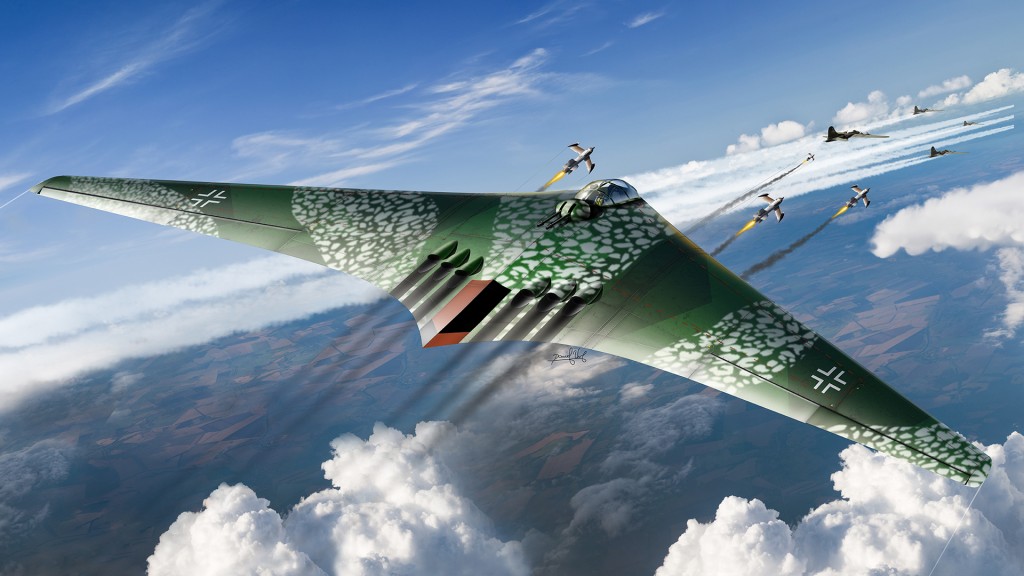This work was done for a model kit company as cover box, using illustrator and Photoshop.
A bit about the Horten Ho XVIII:
In 1944 the RLM issued a requirement for an aircraft with a range of 11000 km (6835 miles) and a bomb load of 4000 kg (8818 lbs). This bomber was to be able to fly from Germany to New York City and back without refueling. Five of Germany’s top aircraft companies had submitted designs, but none of them met the range requirements for this Amerika Bomber. Their proposals were redesigned and resubmitted at the second competition, but nothing had changed. The Hortens were not invited to submit a proposal because it was thought that they were only interested in fighter aircraft.
After the Hortens learned of these design failures, they the went about designing the XVIII A Amerika Bomber. During the Christmas 1944 holidays, Reimar and Walter Horten worked on the design specifications for their all-wing bomber. They drew up a rough draft and worked on weight calculations, allowing for fuel, crew, armaments, landing gear and bomb load. Ten variations were eventually worked out, each using a different number of existing turbojets. Several of the designs were to be powered by four or six Heinkel-Hirth He S 011jet engines, and several of the others were designed around eight BMW 003A or eight Junker Jumo 004B turbojets.
The version that the Hortens thought would work best would utilize six Jumo 004B turbojets, which were buried in the fuselage and exausted over the rear of the aircraft. They were fed by air intakes located in the wing’s leading edge. To save weight they thought of using a landing gear that could be jettisoned immediately after takeoff (with the additional help of rocket boosters) and landing on some kind of skid. The Ho XVIII A was to be built mainly of wood and held together with a special carbon based glue. As a result, the huge flying wing should go largely undetected by radar.
Luft46.com
Want your own artwork?

